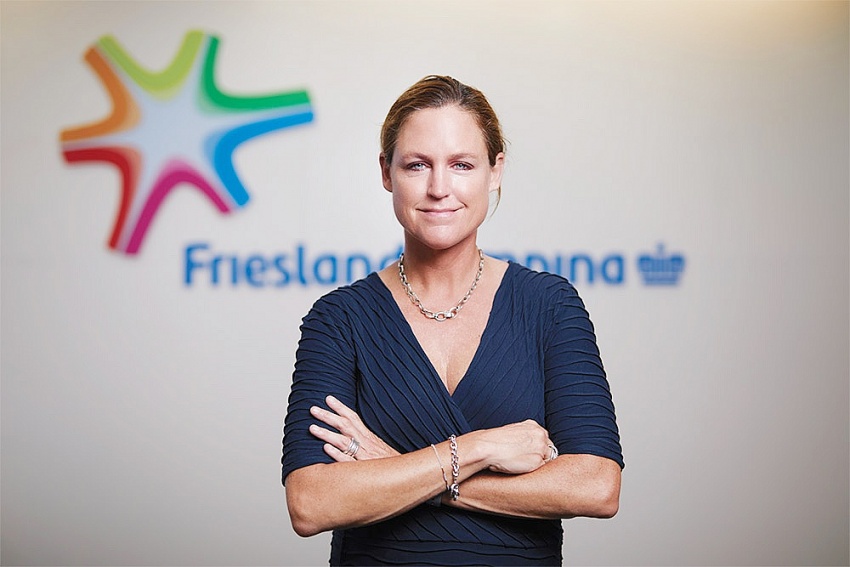Malnutrition burden being tackled
What do you think are the key nutritional challenges of Vietnam?
 |
| President of FrieslandCampina Asia, Corine Tap |
Vietnam has considered food security, defined as accessibility and affordability of food, a national priority for decades, resulting in greatly increased food availability and affordability, and contributing to Vietnam’s overall progress in improving its population’s health.
However, stunting or chronic malnutrition remains a key concern, as Vietnam is among 34 countries globally facing the highest burden. It has 1.8 million children under five years old who suffer from the condition and are at risk of permanent physical and brain damage. It shows that Vietnam’s nutritional security - access to safe, nutritious, and affordable food that enables people to live a healthy life - has not benefitted the country equally.
The recently completed Southeast Asia Nutrition Survey, a study of nearly 14,000 children aged six months to 12 years that we conducted in collaboration with universities and institutions in Indonesia, Malaysia, Thailand and Vietnam, highlights an important issue known as the triple burden of malnutrition. This is the coexistence of undernutrition, micronutrient deficiencies, and being overweight or obese.
The study shows that stunting and anaemia affect 10 and 24 per cent of children, respectively. Being overweight or obese affects over 30 per cent of children aged 7-12 years. Calcium and vitamin D deficiency occurs in over 70 per cent of children aged six months to 12 years in Vietnam. This triple burden is clear evidence of nutritional insecurity, and makes it a matter of great importance to fill nutritional gaps with proper nutrition interventions and nutrition.
What are the solutions that both government and businesses should and can provide to improve nutritional security?
In its national nutrition strategy, Vietnam set the ambition that by 2045 every citizen will achieve their optimal nutritional security, and all nutrition-related non-communicable diseases will be under total control.
To improve nutritional security, policymakers and businesses should focus on the following two critical tasks: accessibility and availability of affordable nutritious products and a whole-of-society approach requiring stronger collaboration among governments, non-governmental organisations, businesses, and society.
As I understand, these angles are also in alignment with the key tasks that the national strategy has urged relevant government agencies to implement, namely enhancing nutrition education and communication, including among school children; and enhancing inter-agency collaboration for better results; and enhancing nutrition interventions including improving quality of meals, ensuring food security and nutritional security.
How can FrieslandCampina in Vietnam help in this regard?
To achieve this goal, we have been focusing on technical and scientific collaboration with relevant Vietnamese agencies in the area of dairy and nutrition. The study that I mentioned earlier is an example of this.
Secondly, technical assistance to produce the best quality milk. Our Dairy Development programme, established in the 1990s in Vietnam, has worked and engaged with over 2,500 dairy farms across the countries, and provided technical training and assistance to many farms. This investment not only helps local dairy farms produce better milk quality, as good as our global Dutch quality standards, but also contributes to higher incomes and better livelihoods.
Thirdly, real nutrition accessible to and affordable for every Vietnamese. As mentioned, the nutrition burdens make it a matter of great importance to fill nutritional gaps for Vietnamese generations, and dairy is a part of the solution. We have been proudly serving Vietnamese consumers for over 27 years, and commit to offering a wide range of choices of real nutrition, in which the new Dutch Lady 180ml pack offers a high value of nutrition at the most affordable price, and is accessible for every Vietnamese.
Finally, under a strategic partnership with the Ministry of Education and Training, we have developed a digital curriculum on nutrition education, which equips millions of primary students with the fundamental understanding about nutrition and the importance of real milk.
We also invest in mass communication to raise awareness among Vietnamese mums of the benefits of real nutrition to help them develop good nutrition consumption habits, needed for the children’s long-term development.
What difficulties do you foresee during such a journey, and how do you personally maintain a balanced nutrition regime?
Vietnam has set the right ambition and actions for its nutrition strategy and vision. The most important task now is to quickly implement it on a larger scale for greater impact. That will require all relevant stakeholders in Vietnam – the government, nutrition businesses, and communities - to accelerate collaboration so that Vietnamese people, especially younger ones, can have access to good quality nutrition needed for physical and mental development for generations to come.
As for myself, I love my job, but I am also a mother of four. Therefore, work and life balance is very to me. I have no special nutrition secrets. As I work for a nutrition and dairy company, milk is something I can’t do without. I also love cheese, which is a good source of protein for maintaining your muscle mass. Also, regular exercise for one or two hours helps as well. I aim for a balanced nutrition and exercise lifestyle, in harmony with my work schedule, as it is good for my physical and mental wellbeing.
 | Dutch Lady promotes its nutrition mission in Vietnam Vietnam has set the right ambition and actions for its nutrition strategy and vision. The most important task now is to quickly implement it on a larger scale for greater impact. President of FrieslandCampina Asia Corine Tap spoke with VIR’s Thanh Dat about the company’s mission as a world-leading nutrition company through its many brands familiar with Vietnamese consumers including Dutch Lady, Yomost, Friso, and Fristi. |
What the stars mean:
★ Poor ★ ★ Promising ★★★ Good ★★★★ Very good ★★★★★ Exceptional
Related Contents
Latest News
More News
- Businesses ramp up production as year-end orders surge (December 30, 2025 | 10:05)
- Vietjet chairwoman awarded Labour Hero title (December 29, 2025 | 13:06)
- How to unlock ESG value through green innovation (December 29, 2025 | 10:03)
- AI reshapes media and advertising industry (December 29, 2025 | 08:33)
- FPT and GELEX sign deal to develop blockchain tech for global markets (December 29, 2025 | 08:29)
- Vietnam’s GDP forecast to grow by 9 per cent in 2026 (December 29, 2025 | 08:29)
- Women entrepreneurs are key to Vietnam’s economic growth (December 29, 2025 | 08:00)
- Vietnam's top 500 value-creating enterprises announced (December 27, 2025 | 08:00)
- The PAN Group shaping a better future with ESG strategy (December 26, 2025 | 09:00)
- Masan Consumer officially lists on HSX, marking the next phase of value creation (December 25, 2025 | 13:20)

 Tag:
Tag:




















 Mobile Version
Mobile Version